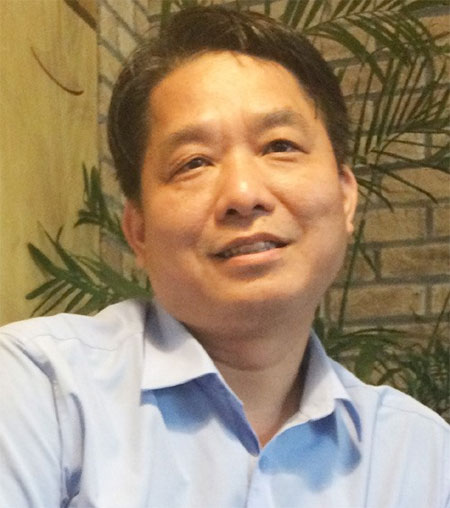VietNamNet Bridge – The subjects of science, technology, engineering and math (STEM) have traditionally been taught as separate subjects, isolated from real-world applications. Viet Nam is now trying to change that. Do Hoang Son, a member of the Organising Board for STEM 2017 talks to the newspaper Kinh te Do thi (Economics and Urban Affairs) about leaders’ important role in expanding and improving STEM education in all schools nation-wide.

Do Hoang Son.
Why do you say Ha Noi is the nation’s “heart” of STEM education?
The concept of STEM education is still new in our country.
STEM is a curriculum based on the idea of educating students in four specific disciplines — science, technology, engineering and mathematics — in an interdisciplinary and applied approach. Rather than teach the four disciplines as separate and discrete subjects, STEM integrates them into a cohesive learning paradigm based on real-world applications.
In the last few years, Ha Noi has taken the lead in STEM education nation-wide. In all major national STEM competitions for secondary schools in the last few years, Ha Noi ranked first, winning the highest marks. The city has created new criteria in STEM education and then shared their experiences with other localities. For example, three years ago, we shared our experiences gained from the Science Club of the 6th and 7th graders at the Ha Noi Amsterdam Gifted Student School with 96 primary and secondary schools in Thai Thuy District of Thai Binh Province in the Red River Delta. And more recently, lecturers from Ha Noi National University, University of Electricity and teachers from the Trung Vuong Secondary School have run many training courses on STEM for almost 400 teachers in Thanh Chuong District, Nghe An Province.
You have been involved in STEM education for many years. In your opinion, how is the interdisciplinary, applied approach being utilised in Ha Noi?
I should say after four years, many STEM clubs have been set up in many secondary schools in Ha Noi. In my own observation, both the students and the teachers have expressed their inspiration to join the STEM clubs. They have learned quite a lot of new knowledge and gained real-life problem-solving skills.
Based on lessons learned in the pilot schools, don’t you think that the STEM approach should be applied in all schools in Ha Noi?
If we introduce STEM to all schools in Ha Noi, it will be a big challenge for the city’s education and training sector. But I’m confident that it is time for Ha Noi to introduce STEM to all schools in the city. To my knowledge, at present, some precincts and districts have started to introduce STEM in schools in their localities. These include Ba Dinh and Hoan Kiem, Bac Tu Liem District and others. Of course, the level of application varies from one school to another. Fourteen schools organised STEM training courses for their teachers before the 2017-2018 new school year start. However, in my own opinion, a very important element to ensure the success of STEM is the active involvement of the school head masters. That’s why we should organise special trainings for them to help them thoroughly understand STEM and its requirements.
Do you have any recommendations for the Ha Noi authorities before they apply STEM on a large scale?
In my opinion, the city should adopt a coherent strategy on STEM education. For example, the city authorities can issue a resolution on applying STEM in all schools with very specific objects, similar to the issuance of the Directive 16 by PM Nguyen Xuan Phuc on the 4.0 Revolution [the so-called Fourth Industrial Revolution, based on new and rapidly developing digital technologies].
Ha Noi has some 100,000 school teachers and they should all attend special courses on STEM before their schools begin implementing it. In my opinion, Ha Noi should learn from the experiences of Thanh Chuong District, Nghe An Province where all 88 schools ranging from primary to junior and high schools have applied STEM.
VNS